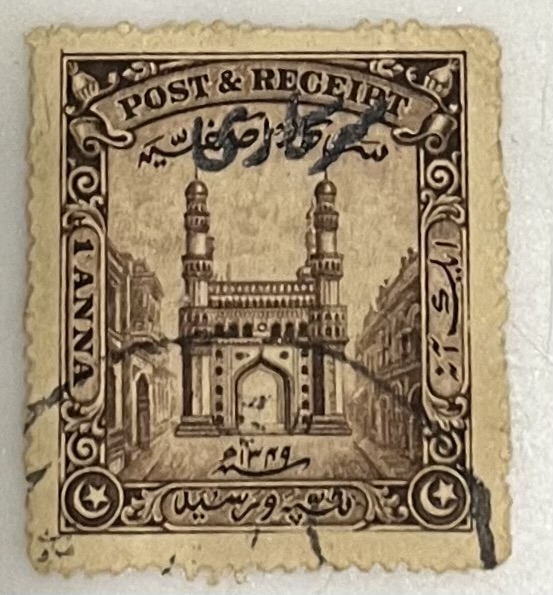The Char Minar stamp – Hyderabad, 1931 was launched by then the princely state of Hyderabad. This stamp dates earlier than the independence of India and was issued when Hyderabad was a princely state and not a part of independent India.
About Hyderabad princely state
Hyderabad State was a kingdom, princely state, and country, located in the south-central Deccan region of the Indian subcontinent with its capital at the city of Hyderabad. It is now divided into the present-day states of Telangana, the Kalyana-Karnataka region of Karnataka, and the Marathwada region of Maharashtra in India.
The state was ruled from 1724 to 1857 by the Nizam, who was initially a viceroy of the Mughal empire in the Deccan. Hyderabad gradually became the first princely state to come under British paramountcy signing a subsidiary alliance agreement. During the British rule in 1901, the state had an average revenue of Rs. 417,000,000, making it the wealthiest princely state in India. The native inhabitants of Hyderabad Deccan, regardless of ethnic origin, are called “Mulki” (countryman), a term still used today.
The dynasty declared itself an independent monarchy during the final years of the British Raj. After the Partition of India, Hyderabad signed a standstill agreement with the new dominion of India, continuing all previous arrangements except for the stationing of Indian troops in the state. Hyderabad’s location in the middle of the Indian union, as well as its diverse cultural heritage, was a driving force behind India’s annexation of the state in 1948. Subsequently, Mir Osman Ali Khan, the 7th Nizam, signed an instrument of accession, joining India.
About Char Minar
The Charminar is a monument located in Hyderabad, Telangana, India. Constructed in 1591, the landmark is a symbol of Hyderabad and officially incorporated in the emblem of Telangana. The Charminar’s long history includes the existence of a mosque on its top floor for more than 425 years. While both historically and religiously significant, it is also known for its popular and busy local markets surrounding the structure, and has become one of the most frequented tourist attractions in Hyderabad. Charminar is also a site of numerous festival celebrations, such as Eid-ul-adha and Eid al-Fitr, as it is adjacent to the city’s main mosque, the Makkah Masjid.
The Charminar is situated on the east bank of Musi River. To the west lies the Laad Bazaar, and to the southwest lies the richly ornamented granite Makkah Masjid. It is listed as an archaeological and architectural treasure on the official list of monuments prepared by the Archaeological Survey of India. The English name is a translation and combination of the Urdu words chār and minar or meenar, translating to “Four Pillars”; the eponymous towers are ornate minarets attached and supported by four grand arches.
About Char Minar Stamp – Hyderabad
This stamp issued in 1930-1931 features the Charminar. The date reads 1349 (Hijri) in Urdu, which corresponds to 1930-1931. The stamps reads the price “One Anna”. At the top corners is the dastar, the traditional turban worn by the Nizam and a symbol of Hyderabad State. At the bottom corners is the cresent and moon, a symbol representing Islam, the state religion.
